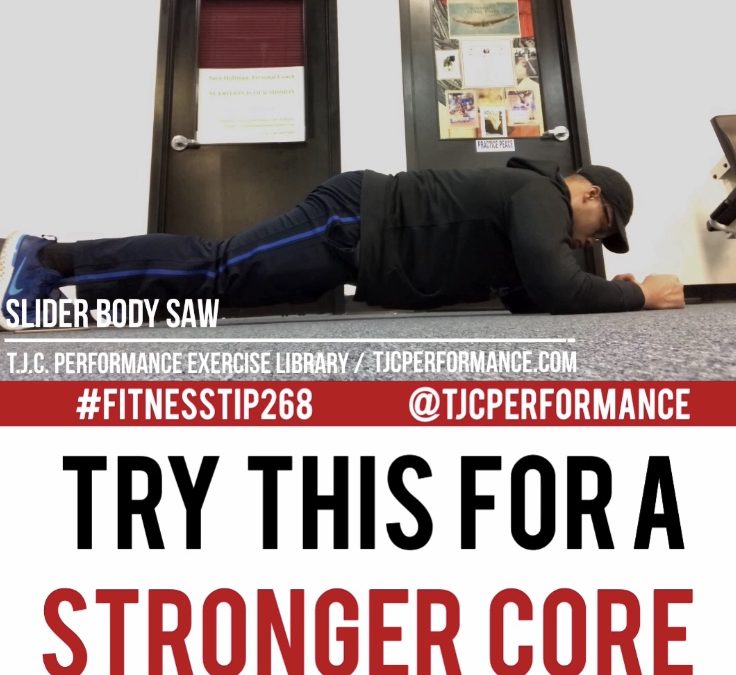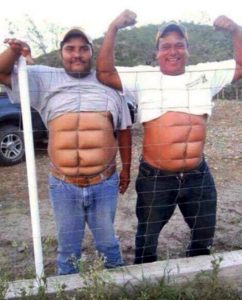Everyone wants a stronger core, right?
You might have heard the phrase, “Everything comes from the core”. There is some merit to this statement.
After all, training your core can also help you get a six-pack, right?
No, not that six pack!
Of course, training your core is NOT all about getting six pack abs.
Your core is not just your abdominals and back, but includes many other muscles attaching to your spine. Some of the important functions and influences of the core include the following:
- Everyday Activities
- Improve Athletic Performance
- Balance and Stability
- Reduce Chances of Injury
If you are looking to strengthen your core, while preserving your spine, this exercise is for you.
The Body Saw
A study conducted by McGill et al examined the muscle engagement and spinal load of a few whole body core exercises (1).
The exercises tested were the hanging leg raise, walkout from a push-up, and body saw.
While the straight-leg hanging leg raise produced the most abdominal activity, the body saw was the easiest on the spine with significant abdominal involvement.
The body saw also elicited large activity in a muscle called the serratus anterior, the “fingerlike” muscles on the ribcage.
The serratus anterior muscle is commonly used when throwing a ball, punching, and tackling. They also aesthetically “pop” along your ribs when you have a low body fat percentage.
Dr. McGill, the lead researcher of the study, is one of the leading back and spinal biomechanics experts in the world.
If he sounds like he knows something about protecting your back, it’s because he probably does.
With that said, the Body Saw is an excellent progression from other plank variations to strengthen your core with less stress on the spine. However, this is a challenging progression from the traditional plank, so be sure to be proficient at the plank first.
Exercise Technique
Place sliders underneath your feet in a plank position with your elbows positioned under your shoulders.
1. Squeeze your glutes and brace your abs, maintaining your alignment throughout the movement.
2. Moving through your shoulders, slide forward and backward in a controlled manner.
At the end of each phase, pause for a moment before sliding forward or back.
Variations
You can use a variety of different implements including the following:
- Towel on Wooden Floor
- Place your feet on top of a towel or try using socks on a wooden surface.
- TRX / Suspension Trainer
- Stick your feet in the straps with your toes pointed downwards towards your shins.
- Sliders
- Sliders are useful if you have a carpet. These are easily portable. These are essentially furniture sliders, so if you recently moved in, you have the equipment!
- Stability Ball
- Place your elbows on the ball or elevate your feet on a smaller ball for support.
- Foam Roller
- You can place a foam roller underneath your shins and use the roller to slide forward and back.
- Sorinex Glute Ham Roller
- Lodge your feet between the notches in the middle. This variation allows you to attach a band to the roller for added resistance!
- Slideboard
- Slideboards (and the booties that accompany them) are fairly rare, but can also be used.
Coaching Tips
Here are some additional notes to keep in mind while performing the body saw:
DO NOT:
❌ Overarch Low Back / Sag Hips
❌ Raise Hips Excessively
❌ Restrict Range-of-Motion
DO:
✅ Squeeze Glutes and Brace (Tighten Abs as if bracing for a punch)
✅ Move through your shoulders
✅ Maintain Alignment
✅ Adequate Range of Motion (Use Thumbs as a Marker – Go Chin to Top of Head at Least)
✅ Sets: 2-3
✅ Reps: 6-8 / Forward and Back
Here is a brief video outlining how to perform the body saw:
Be sure to bookmark this for later reference and share with a friend!
References
- McGill S, Andersen J, Cannon J. Muscle activity and spine load during anterior
chain whole body linkage exercises: the body saw, hanging leg raise and walkout
from a push-up. J Sports Sci. 2015;33(4):419-26.





